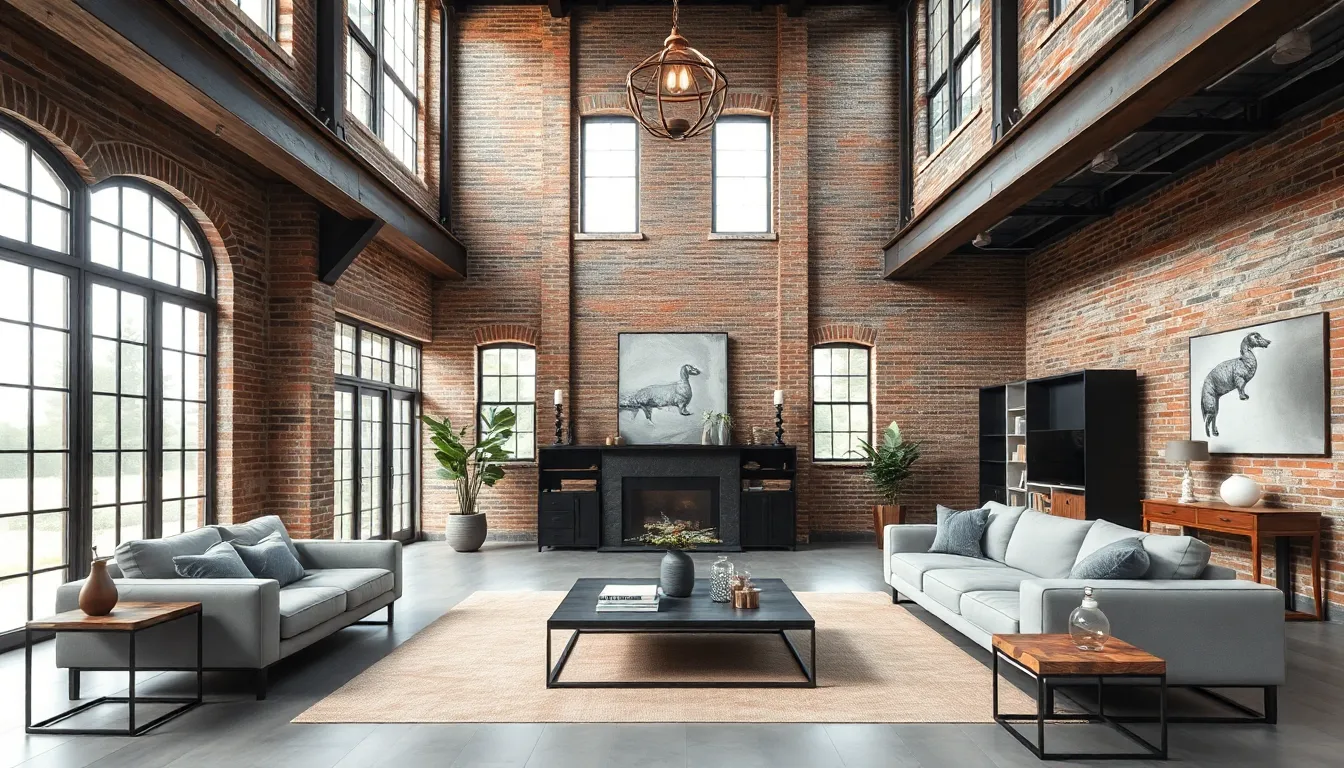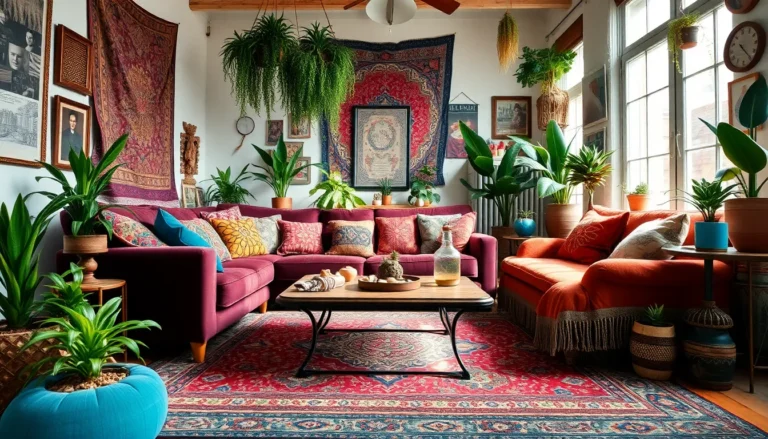Imagine a home that feels like a New York loft, where raw materials and exposed structures collide to create a striking visual narrative. That’s the beauty of an industrial style home. It embraces the charm of warehouses and factories, yet brings in an inviting warmth that says, ‘make yourself at home.’ With the perfect blend of rugged and refined, this design aesthetic is all about celebrating imperfections and creating a lived-in look. Plus, who doesn’t love the idea of turning everyday spaces into chic galleries with a hint of urban edge? Let’s explore how to achieve this bold style without losing an ounce of coziness.
Table of Contents
ToggleWhat Is Industrial Style?

Industrial style is one of the most compelling design trends that has emerged in recent decades. Originating from the repurposing of factories and warehouses into living spaces, this style emphasizes minimalism and functionality, often featuring open floor plans with high ceilings. You’ll find exposed brick walls, large windows, and structural beams that reflect the building’s original purpose. At its core, industrial design is about harnessing the beauty of raw materials while avoiding overly polished finishes. This trend melds the old with the new, celebrating the history of a space while making it livable and stylish.
The charm of industrial style lies in its balance between aesthetics and utility. It invites homeowners to showcase their personality through design choices that highlight practicality without sacrificing visual appeal. Think of it as the ultimate meeting ground for elegance and efficiency.
Emphasizing individuality, industrial spaces often foster an environment where every object tells a story, echoing the character of the building itself.
Key Characteristics of Industrial Design
Color Palette and Materials
When diving into industrial design, color palettes are typically muted and earthy, featuring grays, browns, and blacks. These tones harmonize beautifully with materials like steel, wood, and concrete that make up the structure of industrial homes. Embracing distressed or rusted finishes can further enhance this aesthetic, inviting the viewer to appreciate the texture and history behind each element.
Metal accents often play a significant role. Often, you might find iron pipes, steel beams, and reclaimed wood furniture working together to create a seamless look. This style doesn’t shy away from imperfections or aging: instead, it capitalizes on them.
Furniture Selection for Industrial Homes
Choosing furniture for an industrial space requires a fine balance. Pieces that are functional yet visually intriguing are ideal. Think: a leather sofa with a vintage coffee table made of reclaimed wood, or metal bar stools paired with a rustic kitchen counter.
Another way to incorporate industrial flair is through designer pieces that challenge traditional concepts, like a sculptural chair or a bold metal light fixture. The key is to create a curated look that feels intentional rather than cluttered. Less is often more in this realm.
By merging practical features with stylistic choices, homeowners can ensure that their living spaces balance comfort and sophistication.
Integrating Vintage and Modern Elements
Creating an Industrial Aesthetic in Your Home
One of the joys of designing an industrial style home lies in its versatility. Marrying vintage furnishings with contemporary pieces can create a delightful contrast. An antique sideboard against a sleek, modern wall brings depth and evokes curiosity while still maintaining a coherent vibe. This eclectic mix doesn’t just add character: it makes the space feel lived-in and intimate.
Also, layering textures is essential. Combine smooth surfaces with rougher ones for visual interest. Picture glass or metal alongside reclaimed wood or distressed leather. This juxtaposition lends a dynamic energy, perfectly in line with the industrial ethos.
Choosing the Right Lighting
About lighting fixtures, think statement pieces. Oversized pendant lights that mimic factory lamps can be the centerpiece of your dining area, while strategically placed wall sconces can shed light on your favorite artwork.
Utilizing natural light is also essential in industrial design: expansive windows help brighten up the raw elements of the home while providing views of the outside world. Before choosing fixtures, consider how each piece contributes to a cohesive industrial narrative.
Incorporating Art and Decor
Art and decor in an industrial style home should not be an afterthought. Instead, they are integral parts that can elevate the overall aesthetic.
Consider opting for large-scale art pieces, like abstract paintings or photographs, showcased on expansive walls. Alternatively, incorporating sculptures made from metal or wood can enhance the rugged charm of the space.
Wall decor can also enhance this style by serving as a visual narrative. Think of using framed vintage posters, photographs in monochrome tones, or even metal art that reflects the industrial theme. Plants in sturdy planters or hanging from metal brackets can introduce a sense of life while contrasting beautifully against the harder elements present.
Tips for Maximizing Space in Industrial Interiors
Industrial homes often feature open spaces with high ceilings, but clever space management can make even smaller areas feel expansive. Here are a few tips to consider:
- Use Multi-Functional Furniture: Look for pieces that can serve various purposes. A coffee table with storage or a sofa that converts to a bed can save space without sacrificing style.
- Create Zones: Use area rugs to define different spaces, such as a cozy reading nook vs. a dining area. This segmentation can provide a level of organization that’s particularly beneficial in open-concept layouts.
- Incorporate Vertical Storage: Take advantage of height by using shelving units or hanging storage solutions. This draws the eyes upward, creating the illusion of more space while keeping things organized.


